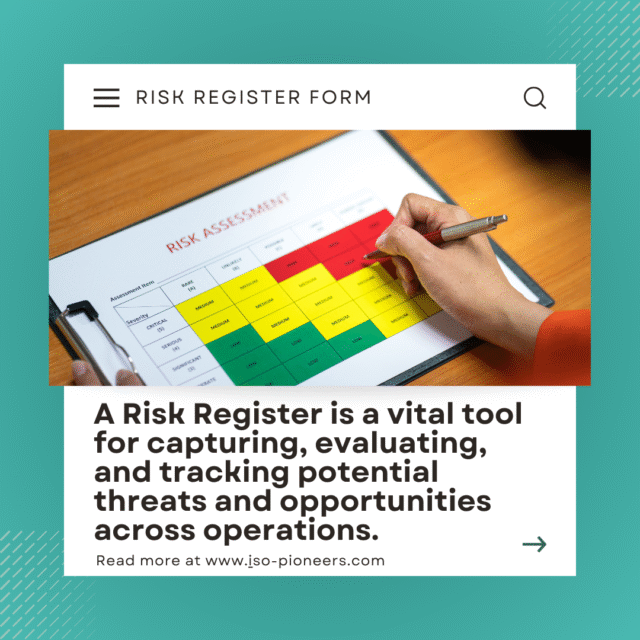In every organization, risk management is not just a compliance exercise — it is a strategic operational discipline.
While strategy determines where a company is heading, operations determine how it gets there safely, efficiently, and without costly disruptions.
In the operational context, risk management involves:
- Identifying potential threats that could affect processes, resources, people, equipment, supply chains, or customer commitments.
- Evaluating each risk for its likelihood of occurring and its potential impact on quality, delivery, cost, safety, or the environment.
- Implementing controls to prevent the risk from materializing or reduce its impact if it does occur.
- Monitoring and reviewing risks to ensure that controls remain effective and emerging threats are addressed promptly.
Well-run companies embed this process into day-to-day operations — it’s not a once-a-year workshop or a reactive firefighting measure. It’s part of production planning, procurement decisions, equipment maintenance, staffing, and even customer service.
How Companies Manage Risk Operationally
- Integration with Processes: Risk reviews happen alongside operational meetings, project kickoffs, procurement reviews, and maintenance planning.
- Ownership & Accountability: Each operational manager is responsible for identifying and managing risks within their area.
- Documented Tracking: Risks are recorded in a centralized register, updated regularly, and reviewed by management.
- Cross-Functional Involvement: Input is gathered from multiple departments (e.g., production, quality, procurement, logistics) to capture all angles.
- Action-Oriented Approach: Every identified risk is tied to specific actions, deadlines, and responsible persons.
The Role of the Risk Register Form
The Risk Register Form is the core operational tool that turns the risk management process into structured, actionable documentation. It allows companies to:
- Log each risk with a clear description and relevant process reference.
- Assess impact and likelihood using standardized scoring criteria.
- Prioritize risks so resources are focused on the most significant threats.
- Assign control measures and track their implementation.
- Review and update regularly to ensure risk data is current and relevant.
In operational settings, this form ensures that nothing slips through the cracks — from equipment breakdown risks in a production line to supplier delays in procurement or safety hazards in maintenance.
✅ Take control of your operational risks today.
Don’t leave your organization exposed to avoidable disruptions. Our ISO 9001:2015-aligned Risk Register Form is ready to use, fully customizable, and designed to help you identify, assess, and control risks with confidence.
Download your Risk Register Form now and make proactive risk management part of your daily operations — because protecting your business starts with knowing your risks.
Risk & Opportunity Register – ISO 9001:2015 Template


